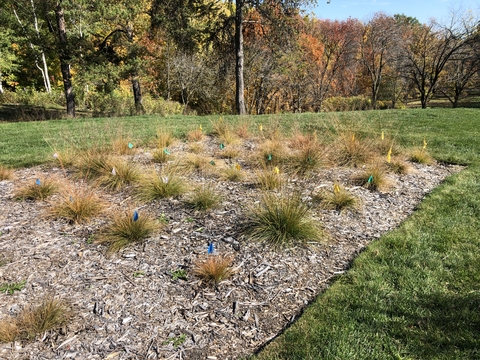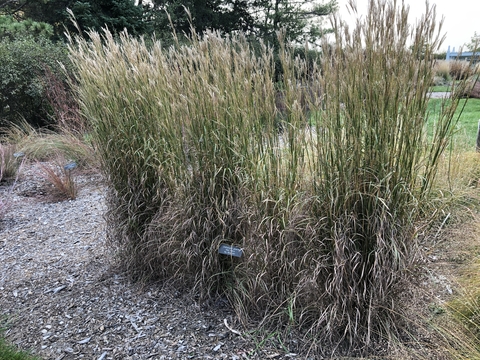As Minnesota’s trees turn brilliant shades of red and orange, ornamental grasses are becoming a favorite in gardens across the state. With their rich colors, unique textures, and graceful movement, these grasses add something special to fall landscapes. In autumn, grasses like Little Bluestem (Schizachyrium scoparium) turn fiery red, while Switchgrass (Panicum virgatum) shows off bronze and purple tones. Tall grasses like Feather Reed Grass (Calamagrostis acutiflora) and Miscanthus (Miscanthus sinensis) add height and texture, with their feathery plumes lasting even after the first frost.
Movement and texture
One of the best things about ornamental grasses is how they sway in the wind, bringing a sense of life and movement to your garden. Their soft rustling sound adds a peaceful vibe, and their fine, delicate leaves contrast beautifully with fall perennials and shrubs. The fluffy seed heads of prairie dropseed (Sporobolus heterolepis) create a soft, dreamy look in any fall garden.
Extending fall beauty
Ornamental grasses keep their color and shape well into late fall, even after the first frosts. When paired with other fall plants like asters and sedums, they create a layered, dynamic look. Native grasses like big bluestem (Andropogon gerardii) and Indiangrass (Sorghastrum nutans) are great for adding height and pops of color in autumn.
Good for wildlife
Ornamental grasses aren’t just pretty, they also help local wildlife. Birds love to snack on the seeds as they get ready for winter, and the grasses provide great shelter. Native varieties like switchgrass and little bluestem are especially good for supporting local ecosystems.
Easy to care for
One of the best things about ornamental grasses is how low-maintenance they are. Once planted, they need very little care, just a yearly trim in spring and minimal watering. Perfect for anyone who wants a beautiful garden without all the work.
Popular fall grasses
Some top choices for Minnesota’s fall gardens are:
- Little bluestem: Turns red-orange in fall.
- Feather reed grass: Tall with golden tones.
- Switchgrass: Adds a purple tint to your garden.
- Miscanthus: Striking silver-white plumes.
- Prairie dropseed: Soft mounds with delicate seed heads.
Switchgrass, Panicum virgatum. ‘Cape Breeze’ is a 3-foot cultivar that spreads out into a large mass, but is a colorful fall addition to your garden. ‘Shenandoah’ is 4 feet tall, a consistent dark red color in late summer and fall, and ‘Ruby Ribbons’ is slightly shorter.
Ornamental grasses bring vibrant color, texture, and a touch of nature to Minnesota’s fall gardens. With minimal effort, you can enjoy their beauty all season long and create a dynamic, low-maintenance landscape that looks great well into winter.






